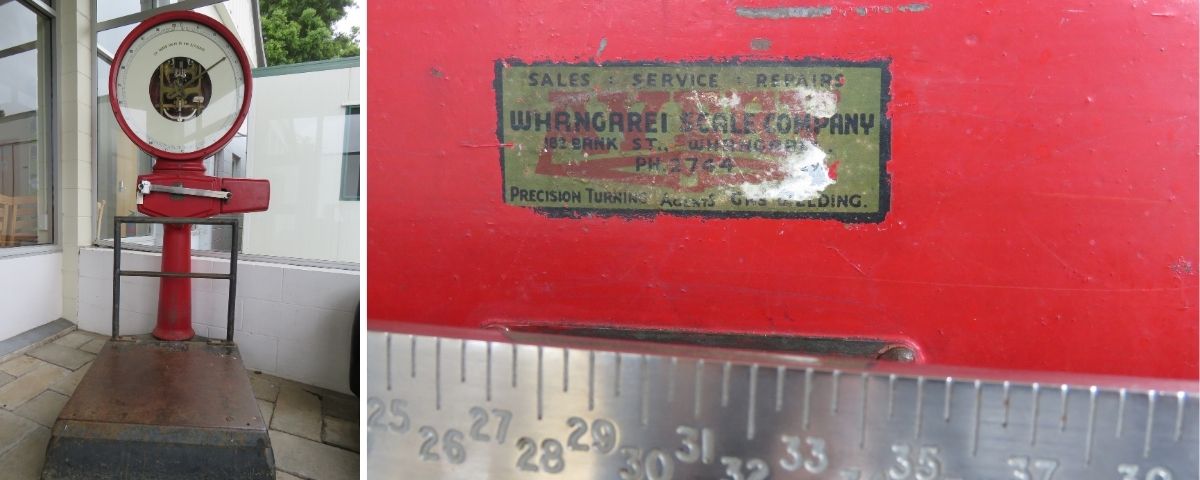Alison Sofield - Collections Volunteer
A fascination with measuring sets us humans apart from the animal kingdom. So it is with weighing and this practice dates back to 2000 BC in Egypt. Their device was simply a rod suspended by a string in the middle balancing goods in pans on either side. A known weight, usually a stone, was in one pan to balance it against the contents of the other pan. Such basic scales have been portrayed in early Egyptian paintings. Ancient Egyptians believed in balance as part of their spiritual journey and the Gods would measure the heart of the deceased to determine if they were heavy with good or bad deeds.
The Romans further developed weighing scales that would weigh with a hook.
I well remember the Plunket Nurse weighing my babies with hand held scales featuring a large hook to cradle the baby in a sling. Further developments led to the platform scales. When the Romans invaded Britain around 85 AD a more accurate system was in place. Metal weights instead of stones were in use, proving to be a more honest system. Traders soon got wise to these changes and provided their own weights. Crafty!
Leonardo da Vinci, an inventor as well as an artist, invented the first automatic balance with a graduated dial scale in the 15th century. In 1770, an Englishman, Richard Salter invented the spring scale. Modern Salter scales can still be purchased today and are generally recognized to be the “elite” of scales. The cheapness of manufacture meant spring scales became very popular.
The industrial era saw further developments in the accuracy of weighing tools. As a result, scales became more finely tuned. Lack of accuracy and the belief that weighing could somehow be rigged was a cause for concern for manufacturers and businesses alike.
Some of us know the agony when getting weighed at the doctors, the result is heavier than on the home scales.
Advances in weighing increased rapidly in 1980 when a patent for a digital scale was applied for. This meant that scientists were able to measure molecular weight to a level not seen before, which in turn led to many of the 20th century’s greatest discoveries, particularly in the space race.
The Whangarei Museum holds a variety of weighing apparatus, from the small to the very large. Visitors to the Museum’s gallery will have seen the very large red set of platform scales in the rear foyer. The large red dial shows 220 lbs in 8 oz divisions as well as a bar for the 8 oz graduations. The label is just made out on the front naming it an Avery scale, provided by Whangarei Scale Company at 182 Bank Street. It would have been used in a large commercial premises in Whangarei, to weigh such items as sacks of grain etc. This set is still in working order. Check out how it measures against your home scales.
